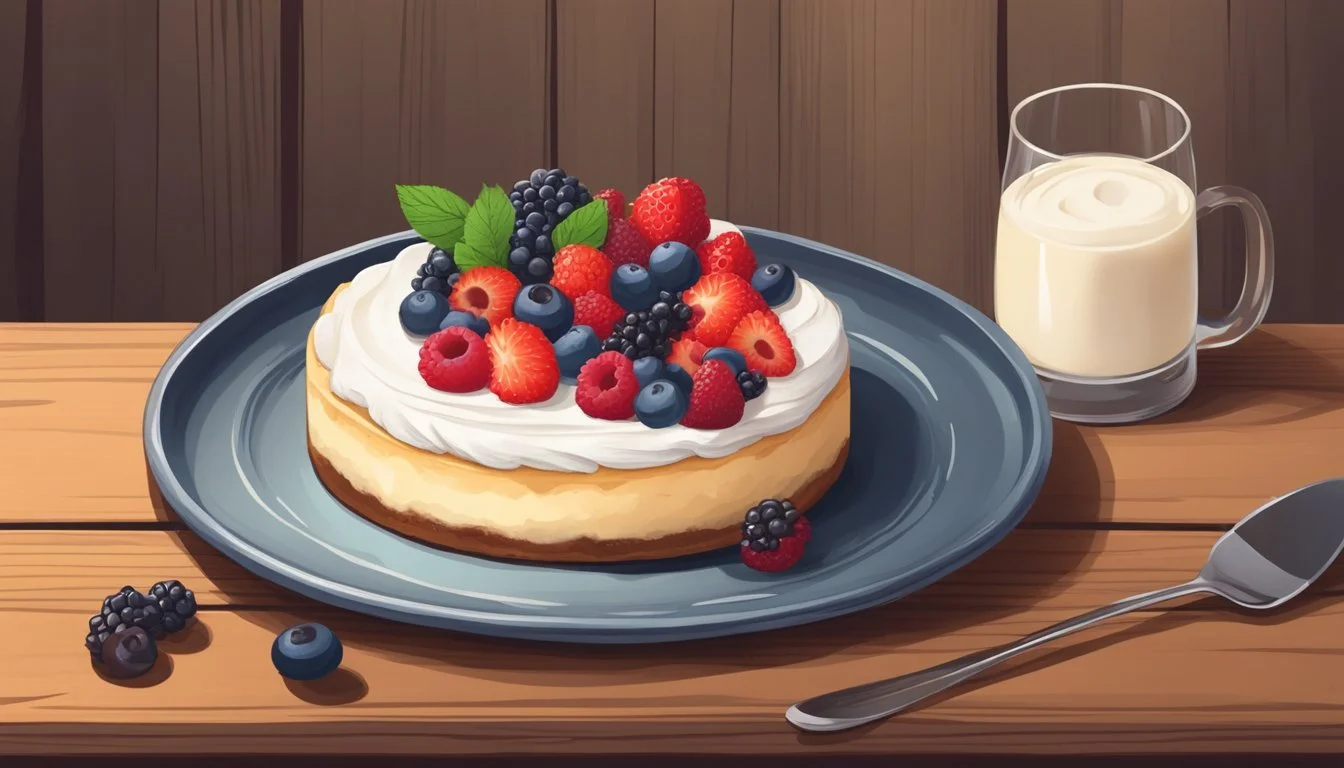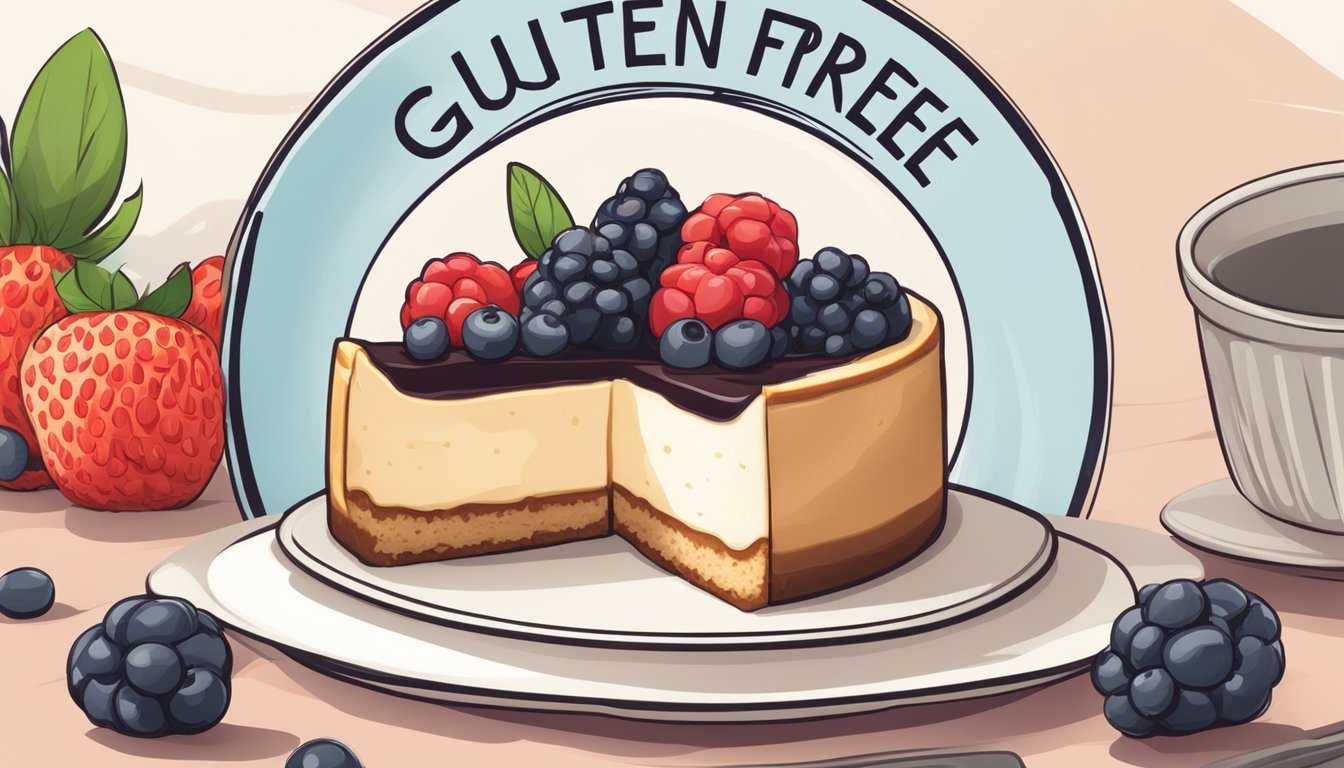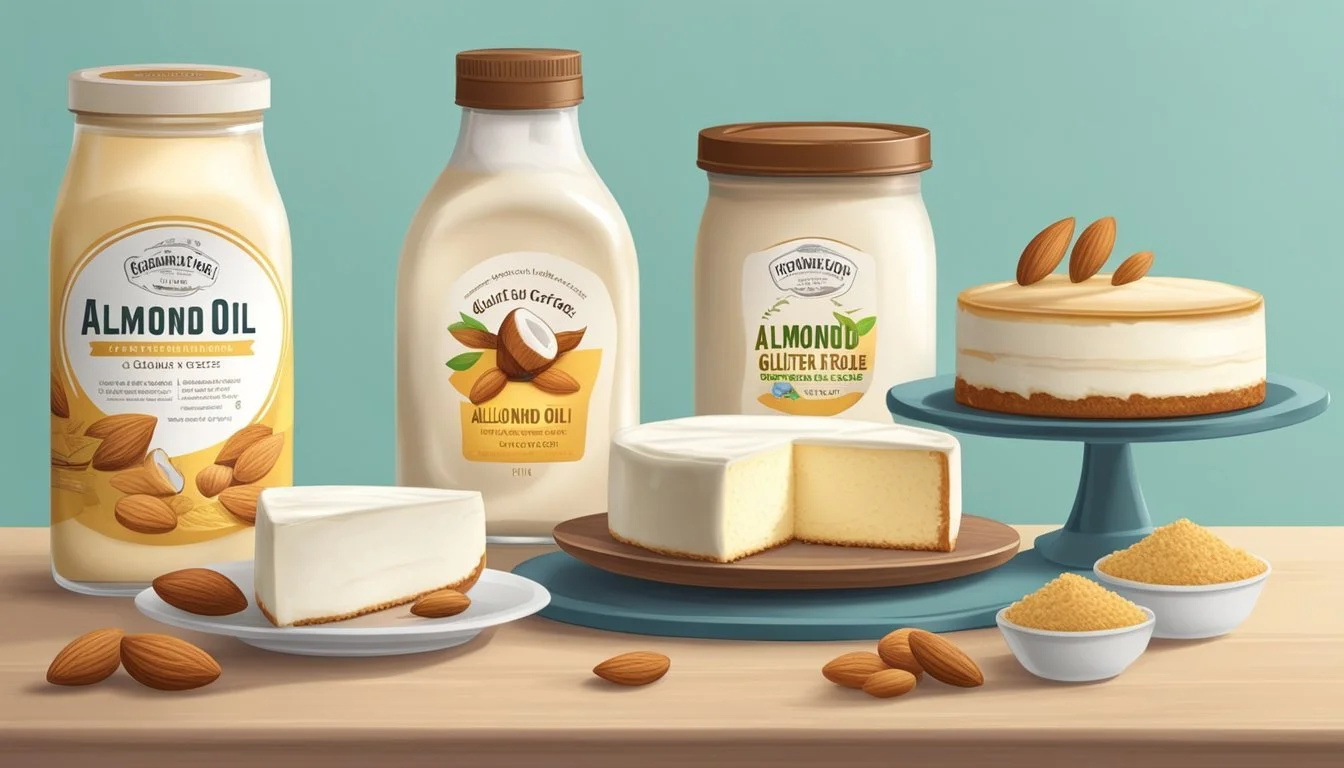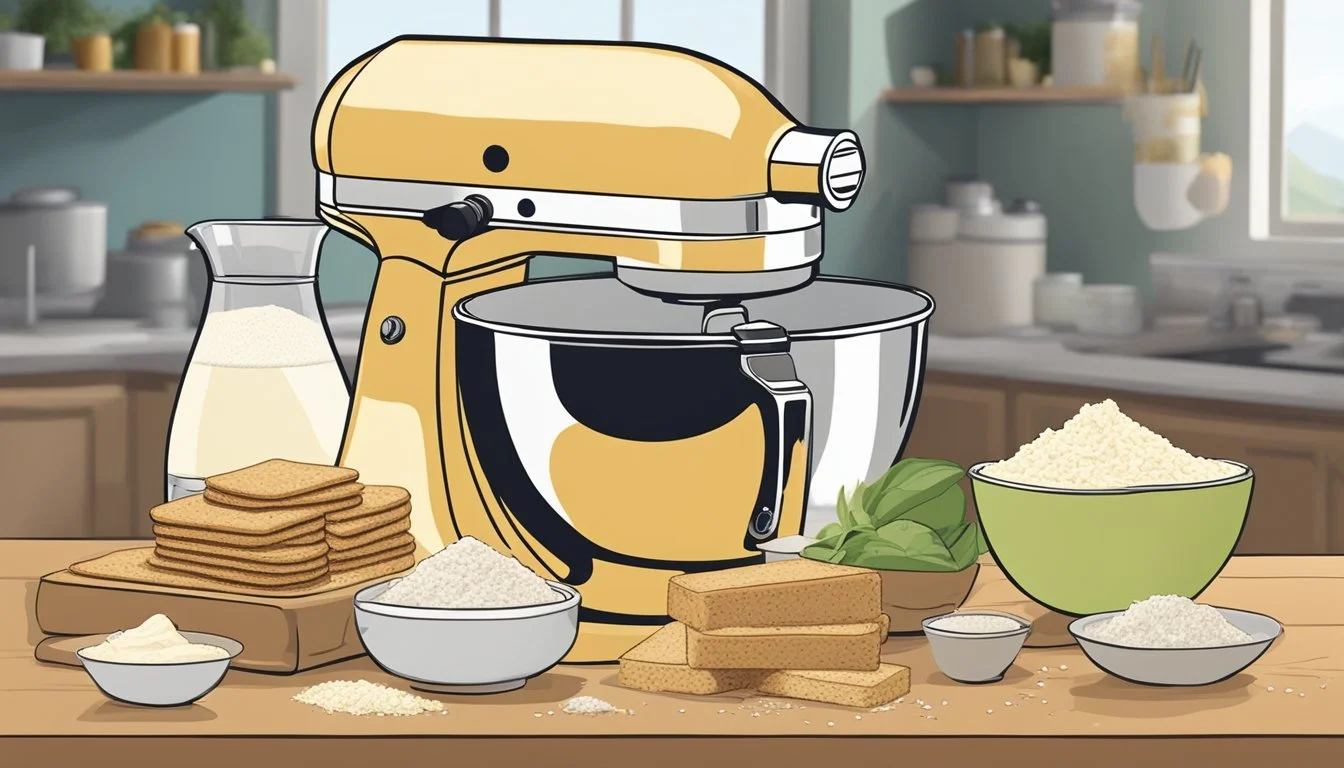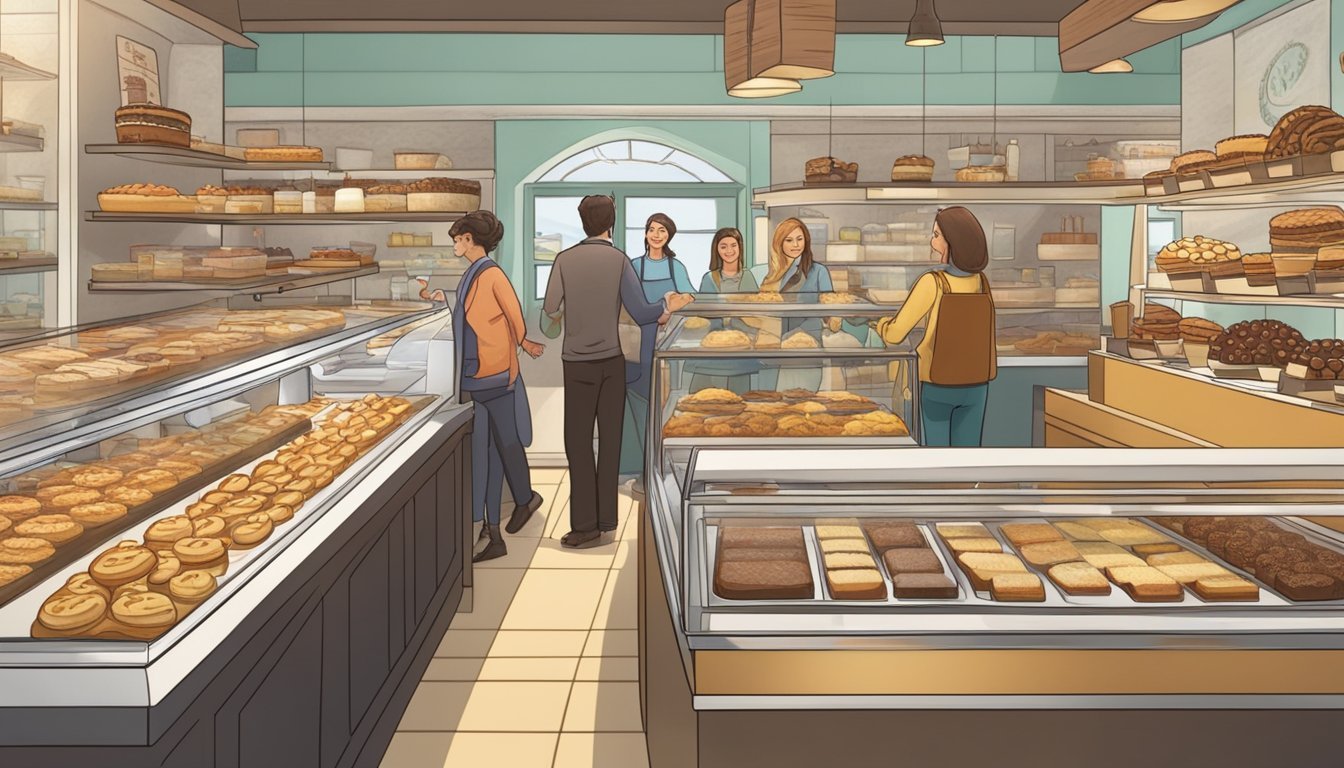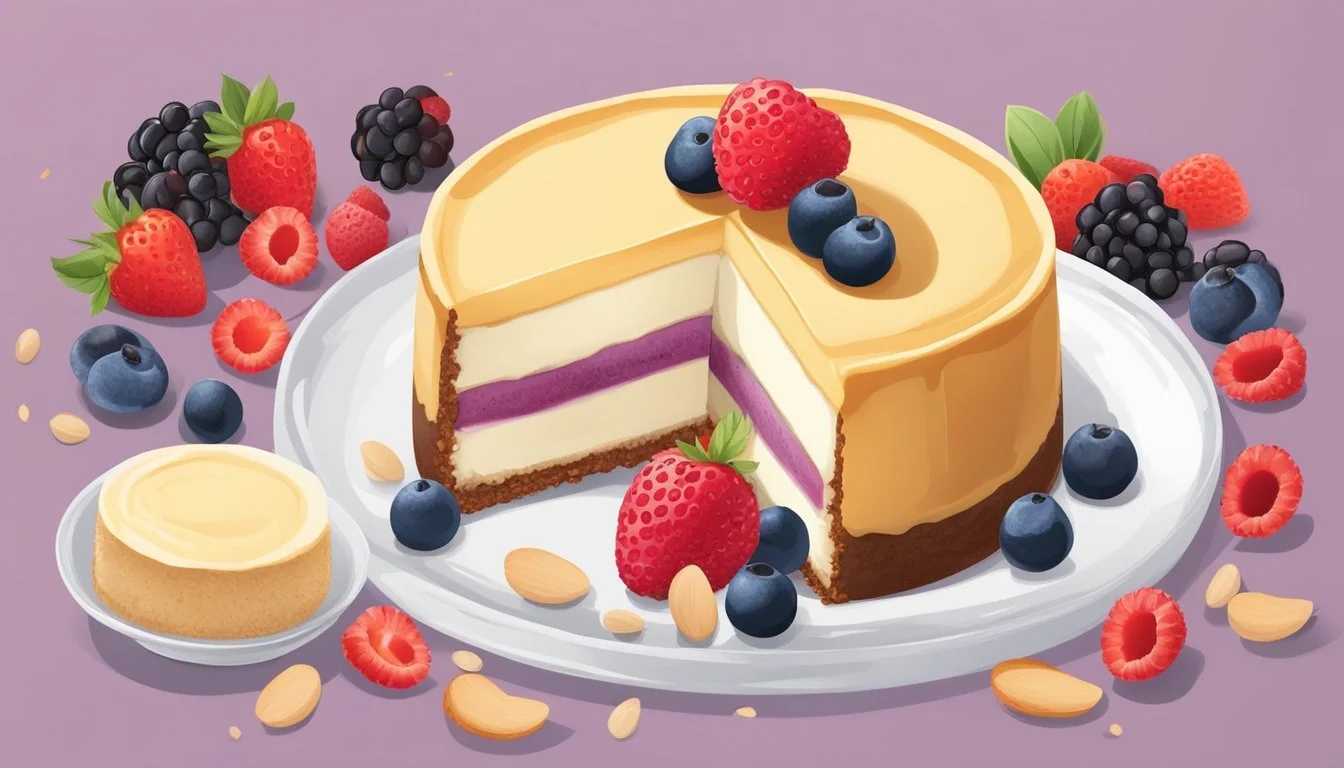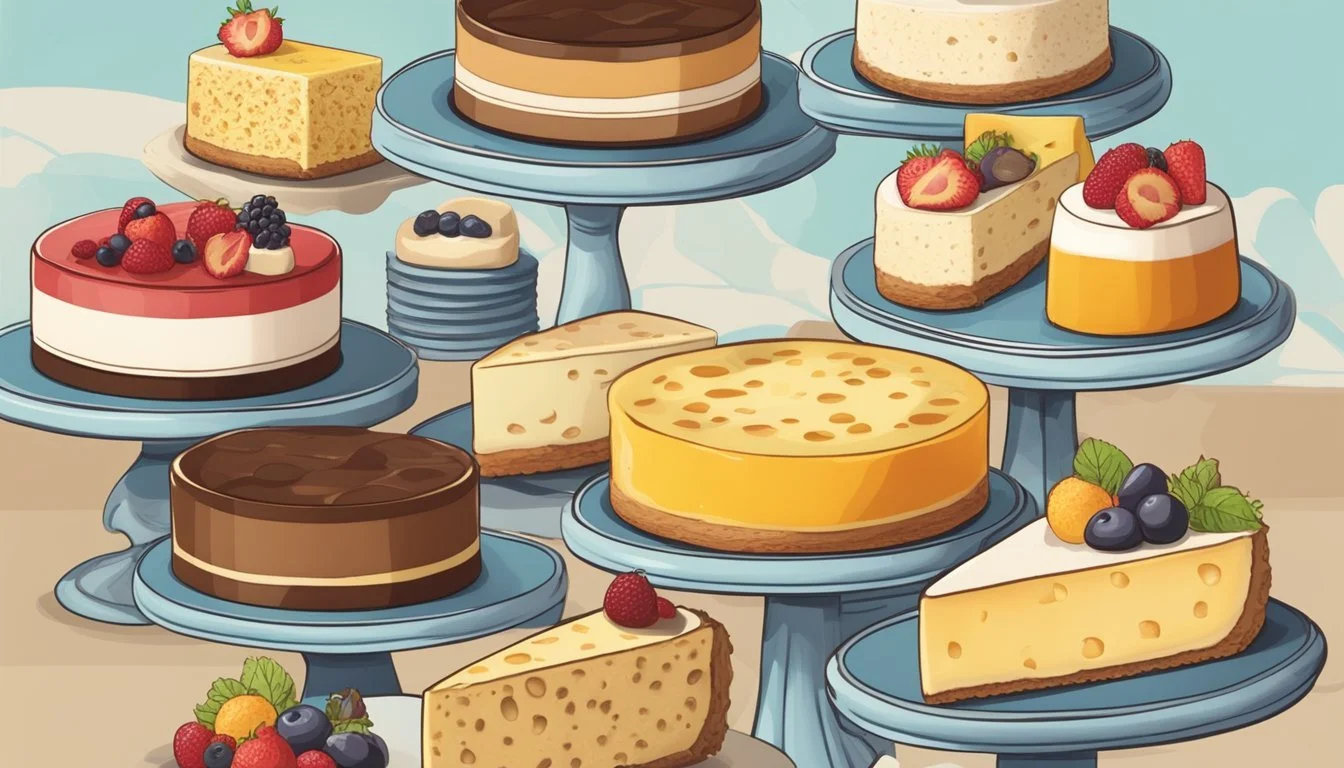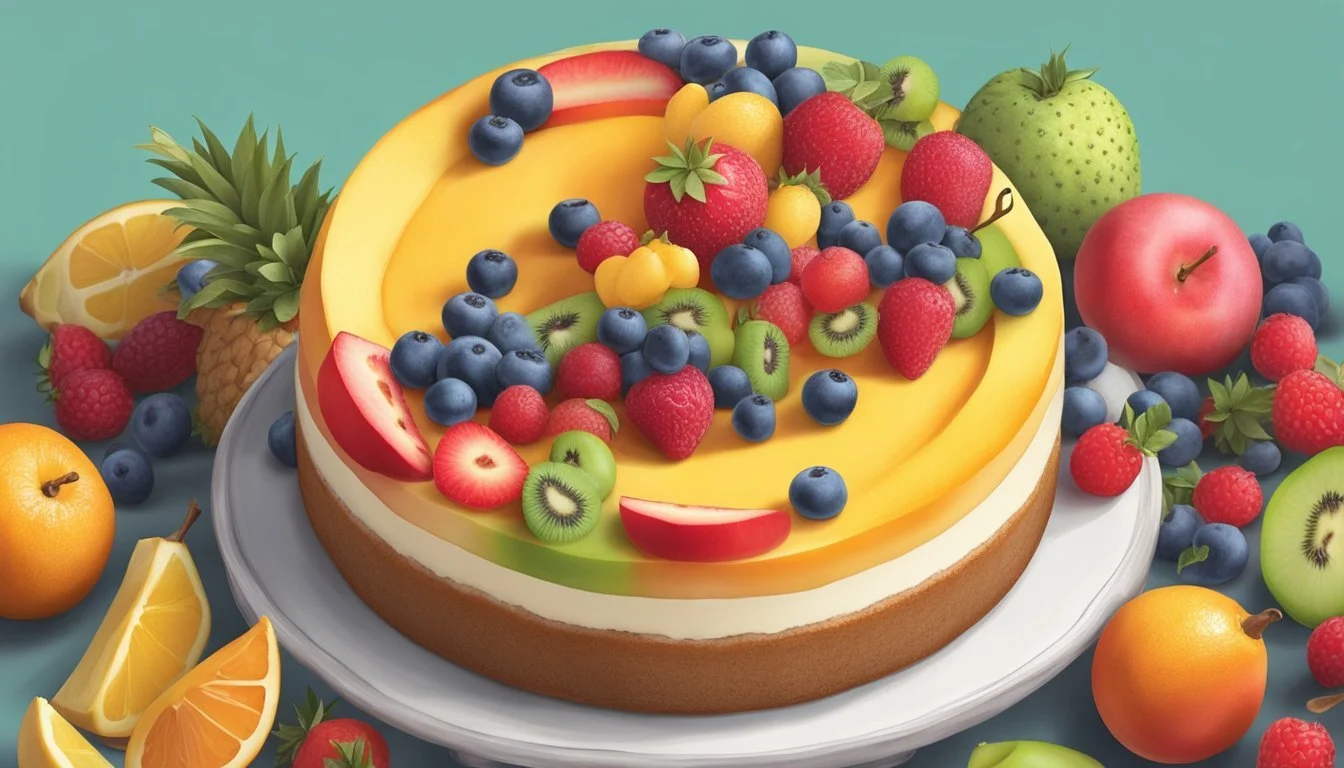Is Cheesecake Gluten-Free?
Exploring Ingredients and Options
Cheesecake is a popular dessert known for its rich, creamy texture and a crust that often features a crunchy base made from crushed graham crackers or cookies. For those with gluten sensitivities or celiac disease, the question of whether cheesecake is gluten-free is a crucial one. Typically, the filling of a classic cheesecake does not contain gluten, as its main ingredients include cream cheese, sour cream, sugar, eggs, vanilla, and often lemon juice. These components by themselves are inherently gluten-free, catering to those who must avoid gluten in their diets.
However, the concern regarding gluten in cheesecake usually arises from the crust, as traditional recipes often call for graham cracker or cookie crumbs, both of which usually contain gluten unless specifically made with gluten-free alternatives. As a solution, gluten-free cheesecakes use crusts made from ingredients like almond flour, powdered sugar, and butter, or even premade gluten-free graham cracker alternatives, allowing for a completely gluten-free version of the treat.
When considering a gluten-free cheesecake recipe, it is essential to use gluten-free ingredients not only for the crust but also to ensure that any added flavors or toppings are gluten-free. Cross-contamination with gluten-containing products should also be avoided during preparation. Gluten-free cheesecake recipes are becoming increasingly available and are tailored to achieve the same beloved taste and texture of traditional versions, ensuring that the gluten-free variant can be enjoyed without compromising on quality or flavor.
Understanding Gluten-Free Diets
A gluten-free diet is essential for individuals with celiac disease and involves strict avoidance of gluten to prevent health complications. Within this framework, the basics of a gluten-free lifestyle and the relationship between gluten and celiac disease are crucial components for managing health effectively.
Basics of a Gluten-Free Lifestyle
To adhere to a gluten-free lifestyle, one must eliminate all foods containing gluten—a protein found in wheat, barley, and rye. This means meticulous label-reading and being aware of potential cross-contamination in food processing. The following list outlines food groups and whether they're typically gluten-free:
Naturally Gluten-Free:
Fruits and vegetables
Meat and poultry (not marinated or pre-seasoned)
Fish and seafood
Dairy
Beans, legumes, and nuts
Foods Requiring Verification:
Processed foods
Sauces and condiments
Grains like oats (must be certified gluten-free)
Beverages
Gluten and Celiac Disease
Celiac disease is an autoimmune disorder triggered by gluten consumption. In individuals with this condition, gluten exposure leads to intestinal damage, which can cause various health issues. For them, consuming even trace amounts of gluten (less than 20 parts per million) can be harmful. A strict, lifelong gluten-free diet is the only current treatment for celiac disease to prevent symptoms and intestinal damage. Diagnosing celiac disease typically involves blood tests and an intestinal biopsy, followed by a recommended diet change from a healthcare professional.
Components of Cheesecake
Cheesecake is a beloved dessert that typically consists of two main components: the crust and the filling. Each plays a crucial role in the dessert's overall taste and texture.
The Crust
The base layer of a cheesecake is its crust, which is often made from crushed graham crackers mixed with sugar and butter. In the context of gluten-free cheesecake, the traditional graham crackers are replaced with a gluten-free alternative to prevent the presence of gluten. The crust mixture is usually pressed into the bottom of a pan to form a firm foundation for the cheesecake.
Ingredients for a Gluten-Free Crust:
Gluten-free graham cracker crumbs
Sugar (commonly powdered sugar)
Melted butter
The Filling
Cheesecake filling is rich and creamy, primarily made from cream cheese (What wine goes well with cheese?). Key ingredients include sugar for sweetness, eggs as a binding agent, sour cream for a smooth texture, and vanilla extract for flavor. The conventional cheesecake filling does not contain gluten; however, it is always essential to check every ingredient to ensure they are certified gluten-free.
Typical Filling Ingredients:
Cream cheese
Sugar
Eggs
Sour cream
Vanilla extract
Gluten-Free Ingredients for Cheesecake
Crafting a delectable gluten-free cheesecake requires selecting the proper components that replicate the taste and structure of traditional ingredients without the gluten.
Gluten-Free Graham Crackers
Gluten-free graham crackers are essential for making a classic gluten-free graham cracker crust. They should be crushed into fine crumbs and can be mixed with butter and a touch of sugar to create a firm base for the cheesecake. Options for gluten-free graham crackers are widely available and should be verified for gluten-free certification.
Alternative Flours for Crust
For those opting to make a crust from scratch, alternative flours like almond flour or coconut flour can be used. Almond flour provides a rich, nutty flavor and is often used in gluten-free cheesecake recipes. Coconut flour is another option but requires more moisture due to its high absorbency.
Almond Flour: A common choice that offers a tender crust with a subtly sweet and nutty flavor.
Coconut Flour: A little goes a long way; it has a light, airy texture but may require additional eggs or liquids.
Ingredient Substitutions
Ingredient substitutions are crucial for ensuring the rest of the cheesecake contains no gluten. Ensure that all dairy products, such as cream cheese and sour cream, are pure and gluten-free. Cornstarch can serve as a thickener instead of flour, and natural flavorings such as vanilla extract or lemon juice should be verified as gluten-free. Always check the labels of each ingredient to ensure they are certified gluten-free and not at risk of cross-contamination.
Cream Cheese: Use full-fat, certified gluten-free cream cheese for the best texture and flavor.
Cornstarch: A gluten-free thickener that helps set the cheesecake without altering the taste.
When selecting ingredients, thorough label reading is necessary as some products may contain gluten or be processed in facilities with gluten, leading to cross-contamination.
Gluten-Free Cheesecake Recipes
When it comes to gluten-free cheesecake recipes, the two popular varieties are classic baked and no-bake options. Both can be made with a variety of gluten-free crusts, ensuring that they cater to the dietary needs of those with gluten sensitivities.
Classic Gluten-Free Cheesecake
A classic gluten-free cheesecake involves creating a crust from gluten-free ingredients like almond flour or gluten-free graham crackers. These ingredients can be combined with sugar and melted butter to form the base, pressed into the bottom of a springform pan lined with parchment paper.
Ingredients for the crust:
Gluten-free graham crackers or almond flour
Sugar
Melted butter
Baking typically requires preheating the oven to a temperature around 350°F (177°C). The filling often includes cream cheese blended with sugar, eggs, and flavorings like vanilla or lemon juice. It is essential to mix the filling until smooth and pour it over the crust, baking until the center is nearly set.
Ingredients for the filling:
Cream cheese
Sugar
Eggs
Vanilla extract or lemon juice
No-Bake Gluten-Free Options
No-bake gluten-free cheesecakes are an excellent alternative for those who prefer not to use the oven or want a quicker preparation time. The crust is made similarly, but with no need for baking. Instead, it is chilled to set. For the filling, one would mix softened cream cheese with sugar, and instead of eggs, use ingredients like whipped cream or condensed milk to give the no-bake cheesecake a thick and creamy consistency.
Ingredients for the crust:
Crushed gluten-free cookies or gluten-free graham crackers
Sugar (optional)
Butter or margarine, melted
Ingredients for the filling:
Cream cheese
Sugar or condensed milk
Whipped cream (if not using eggs)
Flavorings such as vanilla or fruit zest
Refrigeration is crucial for no-bake cheesecakes to allow them to firm up before serving. They should be chilled for several hours, typically at least four, to ensure the proper texture and firmness.
Baking Gluten-Free Cheesecake
When baking gluten-free cheesecake, one must consider preparation techniques, baking methods, and moisture control to ensure a perfect outcome. Precise ingredient selection and execution of each step are paramount.
Preparation Techniques
Accurately measuring gluten-free ingredients is crucial for a consistent base and filling. A common starting point is to combine gluten-free graham cracker crumbs with melted butter for the crust, pressing the mixture into the bottom of a greased springform pan. Many recipes call for chilling the crust in the freezer for about 30 minutes, which helps to solidify the base and reduce crumbling.
Baking Methods and Tips
To bake gluten-free cheesecake, one should typically preheat the oven to between 300°F and 350°F, considering variations in recipe specifics. The cheesecake should be placed on a middle rack to ensure even heat distribution. Using a water bath can help manage the oven's moisture level; simply pour hot water into a baking sheet or roasting pan and position it on the lower rack. The steam environment helps to cook the cheesecake gently, reducing the likelihood of cracks.
Cook Time and Prep Time: Most gluten-free cheesecake recipes require a prep time of about 15-30 minutes. The total cook time varies depending on the oven temperature and recipe specifics but often ranges around 40-60 minutes. A correctly baked cheesecake will jiggle slightly when gently shaken, and its edges will be set while the center remains slightly wobbly.
Controlling Moisture and Cracking
To control moisture and minimize the risk of cracking, cheesecakes benefit from gradual cooling. After baking, chefs often recommend turning off the oven and slightly opening the door, leaving the cheesecake inside for an hour to cool down slowly. This gradual process helps to prevent sudden temperature changes that can cause the surface to crack.
Additionally, maintaining the right balance of moisture in the ingredients is key to achieving a smooth texture without cracks. Prevent overmixing the batter to avoid incorporating too much air, which can expand and crack the cake during baking.
Finishing Touches and Toppings
In the realm of gluten-free cheesecake, the array of finishing touches and toppings can transform a simple dessert into a gourmet treat. The selection of the right toppings adds not just flavor but also visual appeal, while homemade sauces and toppings ensure quality and cater to dietary requirements.
Choosing the Right Toppings
When it comes to toppings for gluten-free cheesecake, one must prioritize taste as well as adherence to dietary restrictions. Toppings like whipped cream, fresh berries, and a dusting of powdered sugar are popular choices that also naturally avoid gluten. The use of fresh berries, for instance, provides a burst of juiciness and a welcome tartness that complements the richness of the cheesecake.
Whipped Cream: Light and airy, an ideal complement to a dense cheesecake.
Fresh Berries: Strawberries, raspberries, and blueberries offer freshness and a pop of color.
Powdered Sugar: A subtle sweetening agent that doubles as decoration.
Homemade Sauces and Toppings
Creating homemade sauces such as berry, chocolate, and caramel allows for full control over the ingredients, ensuring the sauces are free from gluten-containing additives. A simple berry sauce can be made with a mixture of fresh berries, a touch of lemon juice to add brightness, and a hint of powdered sugar if needed. Chocolate and caramel sauces can be crafted with care to avoid cross-contamination with gluten.
Fresh berries: Blend to desired consistency.
Lemon juice: Freshly squeezed for a sharp, citrus note.
Powdered Sugar: Optional, to sweeten to taste.
Chocolate and Caramel Sauces:
Chocolate sauce: Melt gluten-free chocolate with a bit of cream for smoothness.
Caramel sauce: Cook sugar with butter and a hint of cream, ensuring all ingredients are gluten-free.
Serving and Storage
Proper serving and storage are crucial to maintaining the flavor and texture of cheesecake. This section covers precise methods to slice and serve the dessert, along with optimal refrigeration and freezing practices.
Slicing and Serving
To ensure clean cuts, a sharp knife should be dipped in hot water and wiped dry before slicing into the cheesecake. Parchment paper can be used to line the bottom of the pan for easy release. One should serve cheesecake at room temperature for the best flavor, but it is recommended to slice it while chilled to maintain shape.
Refrigeration and Freezing Tips
Refrigeration: Cheesecakes must be refrigerated for at least 4 hours to properly set after cooling at room temperature. They should be tightly covered to avoid absorbing any fridge odors.
Freezing: For long-term storage, wrap the cheesecake tightly in plastic wrap and then in aluminum foil. Properly stored, cheesecake can be frozen for up to 3 months without compromising quality. To defrost, one should transfer the dessert to the refrigerator and allow it to thaw overnight.
Troubleshooting Common Issues
Cheesecake is a beloved dessert, but it can present common issues like cracking or inconsistent textures. With some expert tips and careful attention during preparation and baking, these problems can be avoided or corrected.
Preventing and Fixing Cracks
To prevent cracks in a cheesecake, they should use the following tips:
Slow Cooling: Cool the cheesecake slowly by turning off the oven and leaving the door slightly open. A sudden change in temperature can cause the top to crack.
Water Bath: Baking the cheesecake in a water bath can help maintain even heat and moisture, which minimizes the risk of cracks.
Don’t Overmix: Overmixing the batter can incorporate too much air, leading to cracks. Mix just until ingredients are combined.
If cracks do occur, one can fix them by:
Cornstarch: Adding a small amount of cornstarch to the batter can bind the filling, making it less prone to cracking.
Room Temperature Ingredients: Ensuring all ingredients are at room temperature before mixing can prevent cracks.
Cheesecake Filler: Should a crack appear, it can often be repaired by filling in with a bit of the cheesecake mixture and smoothing it over.
Texture and Consistency Problems
For a cheesecake with the ideal texture and consistency, these tips are crucial:
Measuring Ingredients: Accurate measurements of ingredients ensure the texture is consistent. For gluten-free flour, they should use the spoon and level method to avoid packing the flour.
Underbaking: Cheesecakes should be removed from the oven when the center is still slightly wobbly, as it will continue to cook from residual heat.
Mixing: Mix the batter until just combined on a low speed to avoid incorporating too much air, which can affect the final texture.
Maintaining the right texture can be especially challenging with gluten-free variations, but understanding the common pitfalls and how to address them will lead to successful and delicious results.
Advanced Gluten-Free Cheesecake Techniques
When crafting a gluten-free cheesecake, aficionados can elevate the classic dessert by incorporating decorative finishes and exploring diverse flavor profiles. These techniques not only enhance the visual appeal but also provide a spectrum of tastes that compliment the base recipe.
Decorative Finishes and Flairs
To add visual intrigue to a gluten-free cheesecake, one might:
Pipe: Utilizing a piping bag and tips, one can apply whipped cream or mousse in decorative patterns atop the cheesecake.
Garnish: Accents like lemon zest, fresh berries, or a vanilla bean pod strategically placed, create a professional touch.
Glazes and Sauces: A mirror glaze or fruit coulis can be drizzled or artistically smeared on the plate for a stunning effect.
These methods require minimal additional time but yield a visually delightful dessert that invites admiration before the first bite.
Exploring Diverse Flavor Profiles
A gluten-free cheesecake benefits from the infusion of varied flavors. Below are some suggestions for incorporating new tastes:
Vanilla Bean: Replace vanilla extract with seeds scraped from a vanilla bean pod for a more intense and authentic vanilla flavor.
Citrus Infusion: Incorporate lemon, lime, or orange zest into the cheesecake batter for a refreshing twist.
Quality Ingredients: Opt for high-grade gluten-free graham crackers and a reputable brand of cream cheese, such as Philadelphia, to ensure a rich and consistent base.
Spices and Extracts: Experiment with gluten-free spices or extracts for a unique flavor such as almond, mint, or cinnamon.
When enhancing the flavor of a gluten-free cheesecake recipe, the use of standout ingredients and the willingness to experiment can result in an exceptional dessert experience.
Equipment and Tools for Perfect Cheesecake
The right equipment ensures a cheesecake that is perfectly baked with a consistent texture. Having both essential accessories and specialized tools on hand will elevate the baking process from good to great.
Essential Baking Accessories
Mixer: A high-quality mixer is indispensable for creating a smooth and homogeneous cheesecake batter. It eliminates lumps by thoroughly combining the cream cheese, sugar, and eggs.
Springform Pan: This pan is a must-have due to its removable sides, which make unmolding a cheesecake easy without damaging its structure.
Parchment Paper: Lining the bottom of the pan with parchment paper ensures that the crust doesn't stick, facilitating a clean release.
Baking Sheet: A sturdy baking sheet is useful for catching any drips when the cheesecake is in the oven and for forming a water bath setup.
Specialized Cheesecake Equipment
Pie Crust Shield: This tool can be placed around the edge of the cheesecake to prevent the crust from overbrowning or burning.
Water Bath: Also known as a bain-marie, a water bath provides gentle, even heat, which is crucial for cooking a cheesecake evenly and preventing cracks. This method usually requires a larger baking dish that can hold the springform pan and water while baking.
Nutritional Considerations for Gluten-Free Cheesecakes
When considering gluten-free cheesecakes from a nutritional standpoint, one should understand the implications of gluten-free ingredients on the overall health value of the dessert.
Gluten-free crust alternatives typically involve using gluten-free flours or graham cracker crumbs. These are made from rice, almond, or coconut flour, which can offer a varied nutrient profile compared to traditional wheat flour. Almond flour, for instance, adds protein and healthy fats, but also increases the calorie count. Consumers should read labels carefully, as some gluten-free products may contain higher sugar content to improve taste.
The sugar content in cheesecakes can be high, with many recipes calling for a substantial amount of sugar in both the filling and the crust. Opting for natural sweeteners or reducing the amount of sugar can make a gluten-free cheesecake a slightly better option for those monitoring their sugar intake.
Heavy cream is often a key component in the rich texture of cheesecake fillings. It is naturally gluten-free but high in fat and calories. Those seeking a lighter version may consider substitutes such as light cream or milk alternatives; however, this may affect the texture and taste.
Nutrient Consideration Gluten-Free Impact Calories Higher in gluten-free flours Depends on the flour used Proteins Varied based on crust ingredients Potentially higher with nut-based flours Fats High with heavy cream and butter Naturally gluten-free but calorie-dense Sugars Typically high in cheesecakes May be higher in some gluten-free products
Those following a gluten-free diet due to celiac disease or gluten sensitivity should ensure that all ingredients, including extracts and flavorings, are gluten-free. Cross-contamination during processing could be a concern for those with celiac disease, so certification labels should be sought out for safety.
Cultural Significance of Cheesecake
The history of cheesecake reflects its standing in dessert culture, with its origins traceable back to ancient Greece. Considered a source of energy, cheesecake even made an appearance at the first Olympic games in 776 B.C, signifying its importance in societal celebrations.
When one examines cheesecake's significance across different cultures, it's apparent that it variably anchors itself in culinary traditions. In Western societies, particularly in the United States, cheesecake is a staple in bakery shops and has become synonymous with celebratory events, symbolizing indulgence and comfort.
Europe: Cheesecake recipes diverged as they spread across Europe. Variations in Italy, Germany, and France show how the dessert adapted to local tastes and available ingredients.
United States: The dessert skyrocketed in popularity with the invention of cream cheese in the 20th century, leading to numerous regional adaptations, including the famous New York-style cheesecake.
In contrast, cheesecake doesn't share the same significance in certain parts of the world. In many Asian cultures, for instance, it does not possess a historical presence and is often a new introduction to the dessert market. There, its acceptance can be mixed as traditional sweets continue to hold stronger cultural prominence.
The versatility of cheesecake allows it to be inclusive in its appeal. It can be modified to suit dietary restrictions, such as gluten intolerance, by substituting the crust with gluten-free alternatives or even by opting for crustless versions, enabling wider cultural integration. This adaptability has played a key role in its enduring ubiquity as a dessert.
The Science of Baking Gluten-Free Desserts
When it comes to baking gluten-free desserts (What wine goes well with desserts?), understanding the role of gluten in traditional baking is fundamental. Gluten, a protein found in wheat, rye, and barley, provides elasticity and structure to dough. It helps baked goods rise and maintain their shape. Without gluten, bakers must carefully select alternative ingredients to replicate these properties.
Key Ingredients:
Flours: Gluten-free baking typically employs a blend of flours such as rice, almond, coconut, or potato flour.
Binding Agents: Xanthan gum or guar gum often replace gluten's binding abilities to prevent crumbling.
Moisturizers: Ingredients like applesauce, yogurt, or pureed fruit add moisture lost when omitting gluten-containing flours.
In gluten-free cheesecake, the recipe may call for a crust made from gluten-free graham crackers, combined with butter and often a bit of sugar. The crumbs are pressed into a pie pan or springform and pre-baked to achieve a firm base that can support the moist filling.
Baking Considerations:
Texture: Texture adjustments include altering the flour blend or adding more leavening agents.
Moisture Balance: Careful monitoring of moisture levels is crucial for a tender but not soggy dessert.
Flavor: Flavor may be enhanced with additions like vanilla bean or extracts due to the more neutral taste of many gluten-free flours.
By meticulously adjusting these components, bakers can create gluten-free desserts that rival their gluten-containing counterparts in both taste and texture.
Gluten-Free Cheesecake Variations
Gluten-free cheesecakes offer a luscious dessert option for those avoiding gluten. They can be customized with a variety of flavors, ranging from fruit-infused delights to rich chocolate and caramel indulgences, all while employing gluten-free ingredients.
Fruit-Infused Cheesecakes
Fruit-infused gluten-free cheesecakes blend the creamy base with refreshing fruit flavors to create a delightful taste experience. The crusts are typically made using gluten-free graham crackers or similar substitutes to ensure they're safe for those with gluten sensitivities. Example variations include:
Cherry Delight: A gluten-free crust topped with a classic cheesecake layer and a generous spread of cherry pie filling.
Berry Fusion: Incorporating fresh strawberries, blueberries, and raspberries either within the cheesecake mix or as a colorful topping.
To ensure the cheesecake remains gluten-free, one must verify that any pre-made pie fillings do not contain gluten-containing ingredients.
Chocolate and Caramel Versions
For those with a penchant for richer desserts, chocolate and caramel gluten-free cheesecakes provide a decadent alternative. These versions still use a safe, gluten-free crust as a base but are elevated with luxurious ingredients such as:
Triple Chocolate: A blend of gluten-free chocolate crust with silky chocolate cheesecake filling, topped with a glossy hot fudge sauce.
Caramel Swirl: A creamy gf cheesecake base with swirls of caramel throughout, combining the smoothness of the cheesecake with the sweet, buttery flavor of caramel.
Chocolate and caramel sauces used should be confirmed gluten-free, avoiding potential cross-contamination or hidden gluten sources.
Entrepreneurial Opportunities in Gluten-Free Baking
The gluten-free market provides a fertile ground for entrepreneurs looking to tap into specialty baking. The demand for gluten-free products has steadily increased, with consumers seeking both healthful options and indulgences that cater to dietary restrictions. Business owners have a significant opportunity to diversify by incorporating gluten-free options into their product lines.
Specialty bakers can source quality ingredients to produce gluten-free goods that do not compromise on taste or texture. Innovations in gluten-free flour blends and baking techniques mean that products like cheesecake can maintain the indulgent experience customers expect.
Key considerations for entering the gluten-free business:
Product Quality: Ensure baked goods meet high standards, mimicking their gluten-containing counterparts.
Market Research: Understand the local demand and target audience preferences.
Certification: Obtain gluten-free certification to build trust with consumers.
Packaging: Clearly label products to appeal to and inform the gluten-free community.
Business Model Examples:
Bakery Shop: Brick and mortar store focusing on gluten-free baked goods.
Online Store: E-commerce platform offering curated gluten-free options.
Homemade Goods: Small-scale production of gluten-free items for local distribution.
By focusing on homemade and artisanal qualities, entrepreneurs can create a niche for customers who value both the origin and the health aspects of what they consume. The growth in the gluten-free sector shows promise for a sustainable and profitable venture for those who strategically approach this dynamic market.
Community and Resources
For individuals who follow a gluten-free diet due to celiac disease or other health concerns, community support and resources are crucial. These resources can assist in finding gluten-free options, including cheesecakes that are safe and enjoyable to consume.
Online Communities
There are numerous online platforms where people share gluten-free recipes and dining recommendations. Websites like Celiac.com offer a plethora of gluten-free cheesecake recipes, along with forums where individuals can exchange tips and share experiences.
Celiac Community Foundations and Associations
Celiac Disease Foundation
National Celiac Association
Gluten Intolerance Group
These organizations provide support and advocate for those with celiac disease, offering directories of gluten-free restaurants, which may include reputable establishments like The Cheesecake Factory that have expanded their gluten-free offerings.
Local Support Groups
Most localities have support groups for those with celiac disease where members often discuss safe gluten-free food options. These can be found through hospital networks or local health food stores.
Recipe Resources
Websites: Exclusive gluten-free websites that feature tested cheesecake recipes.
Cookbooks: A range of cookbooks are dedicated to gluten-free baking.
Cooking Workshops: Certain community centers or culinary schools may offer gluten-free baking classes.
Friends and Family Support
A support system of friends and family knowledgeable about gluten-free requirements can greatly help. They can provide encouragement and can be allies in finding or preparing gluten-free dishes like cheesecake.
By leveraging these resources, individuals requiring a gluten-free diet can enjoy a variety of foods, including the indulgence of a delicious, gluten-free cheesecake without the worry of gluten contamination.
Tips for Gluten-Free Cheesecake Success
Achieving a delightful gluten-free cheesecake requires detailed planning and creative adaptation, ensuring success through meticulous ingredient choices and presentation finesse.
Thorough Planning and Preparation
The key to a successful gluten-free cheesecake begins long before the oven preheats. Individuals must take the time to carefully select gluten-free ingredients, paying special attention to the graham crackers, often a source of hidden gluten. One must ensure to use gluten-free graham cracker crumbs for the crust. This ingredient particularly impacts both texture and flavor.
Ingredient Checklist:
Gluten-free graham crackers
Gluten-free non-stick baking spray or butter
Parchment paper
Cream cheese
Sugar
Eggs
Cornstarch (ensure it's gluten-free)
Sour cream
Lemon juice
Vanilla extract
Organization
Preheat the oven as directed.
Grease the springform pan, and line it with parchment paper for effortless release.
Combine the crust ingredients uniformly and press them firmly into the pan to avoid crumbling.
Creative Adaption and Presentation
When presenting a gluten-free cheesecake, the end goal is to rival its traditional counterpart in both appearance and taste. It should be indistinguishable from a cheesecake containing gluten. For a visually appealing presentation, individuals can consider topping the cheesecake with a light dusting of powdered sugar, fresh berries, or a drizzle of gluten-free caramel or chocolate sauce.
Presentation Tips:
To avoid surface cracks, cheesecakes should be cooled slowly.
A clean, sharp knife dipped in hot water will render clean slices.
Garnishes should not only complement the cheesecake in flavor but also add a contrasting texture or color.
Executing these tips thoughtfully, any chef can master the art of gluten-free cheesecake-making, serving a dessert that delights the palate and wows the eyes, without a trace of gluten in sight.
Exploring International Cheesecake Styles
Cheesecake comes in many international varieties, each with its distinct flavors and textures. Adapting these global recipes for a gluten-free diet preserves their unique qualities while making them accessible to those with gluten sensitivities.
Cheesecake Around the World
New York-Style Cheesecake: This classic American cheesecake is known for its rich, dense, and creamy texture, often served with a graham cracker crust.
Italian Ricotta Cheesecake: Italian cheesecake typically uses ricotta for a lighter, grainier texture and is subtly sweetened compared to its American counterpart.
French Cheesecake: In France, cheesecake often features a lighter, airy texture, courtesy of gelatin and a mousse-like consistency.
Japanese Cotton Cheesecake: Popular in Japan, this cheesecake style has a fluffy, sponge-like texture that differentiates it from the denser Western versions.
German Käsekuchen: The German cheesecake uses quark, a cheese variety, creating a unique texture and flavor profile distinct from cream cheese-based versions.
Adapting Global Recipes to Gluten-Free
Crust Substitutions: Traditional cheesecake crusts, often made from graham crackers or cookies, can be replaced with gluten-free alternatives using ingredients like almond flour or gluten-free graham crackers.
Cheese and Fillings: The cheese base of most cheesecakes is naturally gluten-free. By ensuring other filling components, such as flavorings and thickeners, are gluten-free, international cheesecake recipes can remain authentic to their origins.
Cross-Contamination Awareness: In preparing gluten-free cheesecake, it's crucial to avoid cross-contamination with gluten-containing ingredients to ensure safety for those with celiac disease or gluten sensitivity.
Festive and Seasonal Cheesecake Ideas
Cheesecakes offer a versatile canvas for incorporating seasonal and festive flavors. Throughout the year, one can tailor cheesecake toppings and styles to match the occasion, enriching celebrations with this creamy dessert.
Holiday-Themed Cheesecakes
During the holiday season, cheesecakes take on the merry flavors of the time. Christmas cheesecakes might feature toppings like a rich red cherry sauce to evoke the colors of the season, while a hint of peppermint extract transforms a classic recipe into a minty wonder for the senses. For Thanksgiving, a pumpkin-spiced cheesecake topped with whipped cream and a sprinkle of cinnamon caters to autumnal traditions.
Hanukkah celebrations can be sweetened with a blueberry sauce drizzled over a classic cheesecake, the bright berries offering a nod to the blue and white colors traditionally associated with the festival.
Summer Cheesecake Treats
As the weather warms, cheesecakes become lighter and fruitier. A popular Fourth of July treat is a cheesecake topped with fresh berries arranged to resemble the American flag—blueberries, strawberries, and raspberries providing a burst of freshness as well as patriotic flair.
For a more tropical twist, a cheesecake in the summer may feature layers or swirls of mango or pineapple puree. A topping of fresh, sliced peaches or a citrus glaze can also infuse a cheesecake with the essence of the sunny season, making it a refreshing dessert choice for barbecues and picnics.

